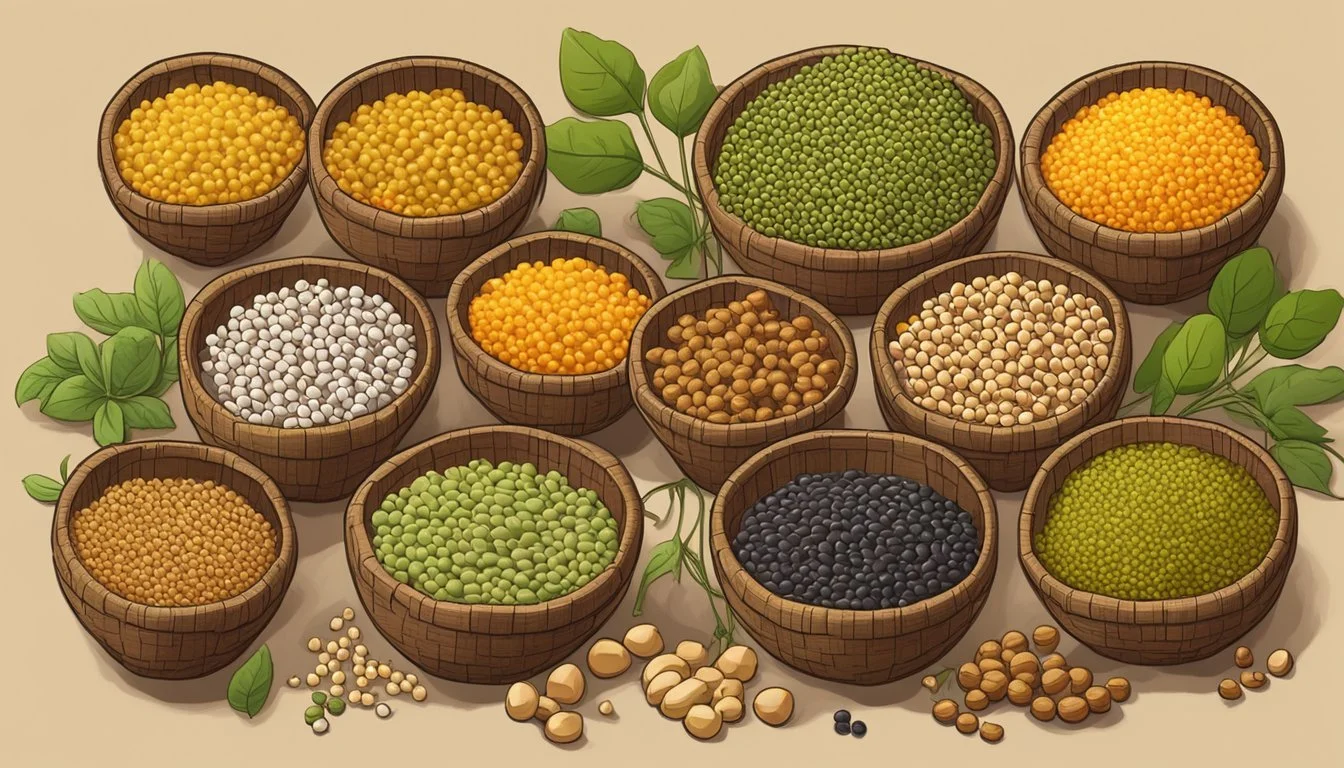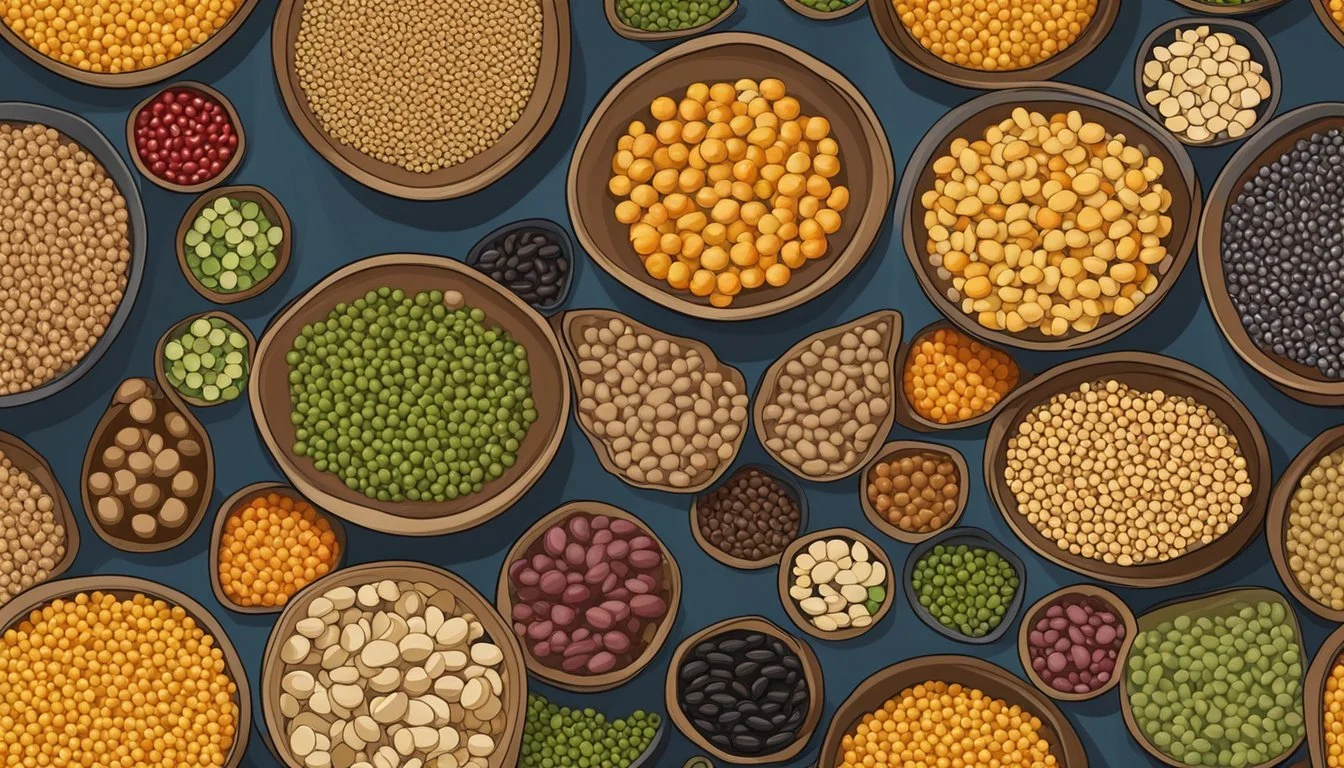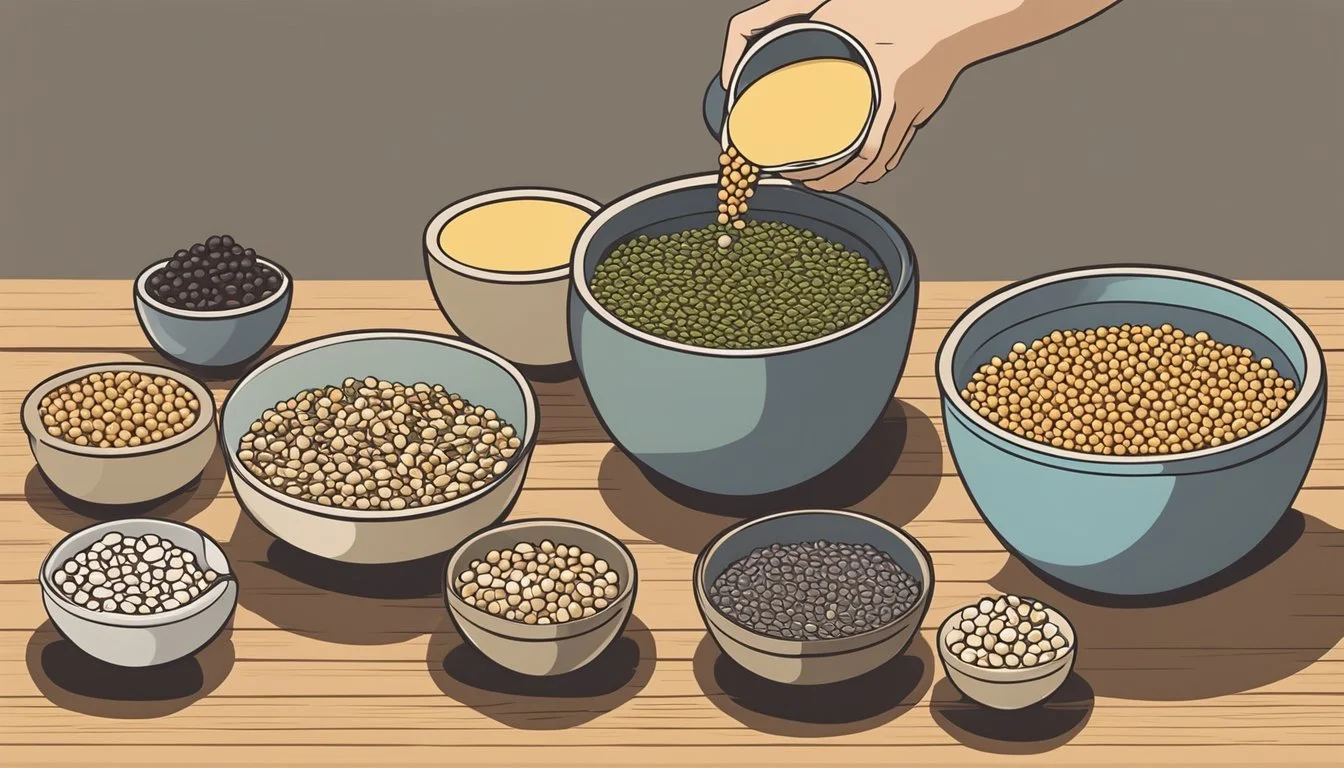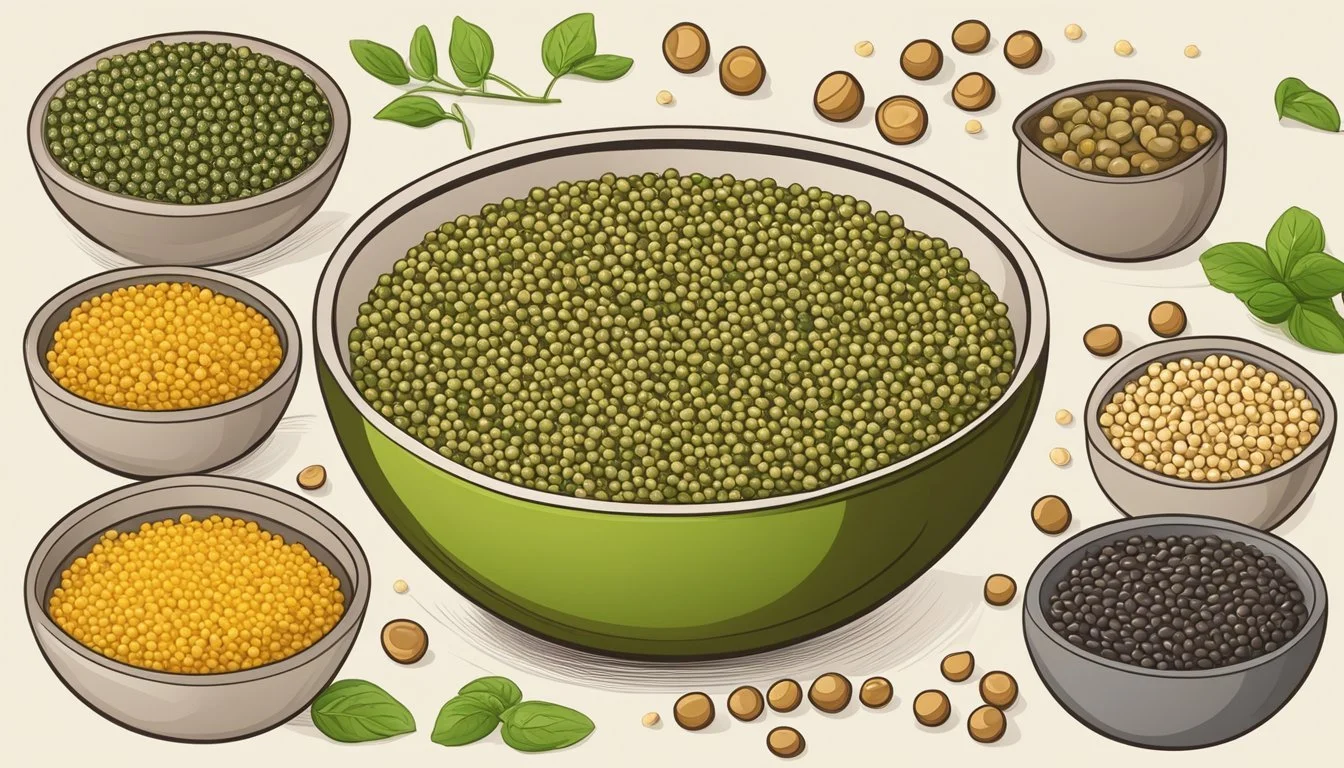Mung Beans Substitutes
Best Alternatives for Your Recipes
When you run out of mung beans, you don't have to worry. There are many excellent substitutes that can maintain the texture and flavor of your dish without compromising its integrity. Lentils stand out as a popular alternative, particularly brown and green varieties, which mimic the soft, mushy texture of cooked mung beans.
Sunflower sprouts and snow peas offer unique textures and flavors, making them suitable substitutes in different culinary contexts. Pigeon peas, or toor dal, are another viable option known for their sweet flavor that blends well in soups, stews, and curries.
Choosing the right substitute can elevate your recipe while ensuring you enjoy the meal as intended. Whether you're making a hearty stew or a refreshing salad, these mung bean alternatives can seamlessly fit into your dishes.
Understanding Mung Beans
Mung beans, also known as green gram or Vigna radiata, are a versatile legume with a rich nutritional profile. They are commonly used in various cuisines for their distinct flavor and health benefits. This section will delve into the nutritional content, culinary applications, and availability of different varieties.
Nutritional Profile
Mung beans are packed with essential nutrients such as protein, fiber, and an array of vitamins and minerals. They provide significant amounts of vitamin C, folate, and vitamin B6.
Rich in protein, they are an excellent meat alternative, especially in vegetarian and vegan diets. Their high fiber content aids in digestion and promotes gut health. Mung beans are also known for their potential to lower cholesterol levels and reduce the risk of heart disease.
Additionally, they contain antioxidants that strengthen the immune system and help fight infections.
Culinary Uses
Mung beans are incredibly versatile in the kitchen. They can be used whole, split (moong dal), or sprouted. The whole beans are often found in soups, stews, and curries, providing a slightly sweet flavor and soft texture once cooked.
Sprouted mung beans are popular in stir-fries and salads, offering a crunchy texture and a fresh, bean-like flavor. Moong dal, made from split mung beans, is commonly used to make traditional dals and various snacks.
Black mung beans, another variant, are typically used in savory dishes, enhancing their heartiness and depth of flavor.
Availability and Varieties
Mung beans are widely available and come in several varieties including whole green mung beans, split mung beans, and black mung beans. Whole green mung beans are most commonly found and used around the world.
Split mung beans, or moong dal, are used extensively in South Asian cuisines. Black mung beans are less common but offer a unique taste for different culinary applications.
They can be found in most grocery stores, particularly in the international or health food sections. They are also readily available online, making them accessible to a global audience. This wide availability ensures that mung beans can be easily incorporated into various dietary preferences and cuisines.
Mung Beans in Global Cuisine
Mung beans are a versatile ingredient, making their way into various dishes across different culinary traditions. Specific regions showcase mung beans in unique forms, from savory dishes to sweet treats.
Mung Beans in Asian Cooking
Mung beans are a staple in many Asian cuisines. In Chinese cuisine, they are often used to make mung bean soup, a light and refreshing dessert served cold, especially during summer. Mung beans are also mashed into a paste to fill mooncakes and buns, providing a subtly sweet flavor.
Mung bean sprouts are another popular form. These sprouts add a crisp texture to stir-fries and soups. In Southeast Asian countries, such as Vietnam and Thailand, mung beans are integral in making sticky rice desserts like Bánh Xu Xê.
Mung Beans in Indian Cuisine
In Indian cuisine, mung beans are highly valued for their nutritional benefits and versatility. They are used in both whole and split forms. Whole mung beans, known as moong dal, are used in various savory dishes like curries and stews.
Split mung beans, referred to as moong daal, cook quickly and are used in dishes like khichdi, a comforting porridge-like dish made with rice and lentils. Mung beans are also used in sweets like moong dal halwa, which combines the beans with ghee, sugar, and cardamom to create a rich dessert.
Mung Beans in Vegetarian and Vegan Diets
For those following vegetarian and vegan diets, mung beans are an excellent source of plant-based protein. They are often used in soups, stews, and salads. Mung bean soup, enriched with vegetables and spices, is a nutritious option that fits well within these dietary preferences.
Mung beans are also utilized to make vegetarian burgers and patties. The beans can be mashed and mixed with various seasonings to form a delicious and healthy meat alternative.
Mung bean sprouts are a favorite in raw or lightly cooked dishes, adding both crunch and nutrients to meals. These sprouts are often included in vegan-friendly stir-fries, spring rolls, and mixed salads.
Choosing Mung Bean Substitutes
Choosing substitutes for mung beans involves considering both texture and flavor, as well as ensuring the nutritional profile is similar. Substitutes like lentils, sunflower sprouts, and pinto beans are common choices, but each offers unique characteristics.
Considerations for Texture and Flavor
The texture and flavor of the substitute can greatly impact your dish. Lentils, particularly brown and green varieties, have a similar soft and mushy texture once cooked. They also impart a mildly earthy flavor, making them an ideal 1:1 replacement.
Sunflower sprouts provide a bean-like flavor with a crunchy texture, suitable for raw applications or quick sautés. Snow peas, with their sweet and crunchy pods, are another option for a refreshing texture, especially in salads or stir-fries. Pinto beans offer a similar texture and flavor profile, making them a versatile substitute for soups, stews, and salads.
Nutritional Comparisons
When choosing a substitute, it's important to compare the nutritional content. Mung beans are high in protein and fiber. Lentils also offer a high protein and fiber content, making them nutritionally comparable to mung beans.
Sunflower sprouts are rich in vitamins and antioxidants, while snow peas provide vitamin C and dietary fiber. Pinto beans are another nutritious option, containing high levels of protein, fiber, and essential nutrients. All these substitutes can help maintain the nutritional balance of your dish while providing varied textures and flavors.
Top Substitutes for Mung Beans
When looking for alternatives to mung beans, several substitutes can provide similar textures and flavors. Key substitutes include lentils, chickpeas, garbanzo beans, and various types of peas and legumes.
Lentils as a Substitute
Lentils are an excellent substitute for mung beans due to their similar texture and earthy flavor. Varieties like green and brown lentils can replace mung beans in soups, salads, and stews.
Red lentils cook quickly and become mushy, making them ideal for dals and purees. Their mildly sweet flavor pairs well with spices.
Lentils require less soaking time than mung beans, making them a quicker option. Their versatility allows them to work well in both savory and sweet dishes.
Chickpeas and Garbanzo Beans
Chickpeas, also known as garbanzo beans, have a nutty flavor and firm texture that can substitute for mung beans in various recipes. They are particularly great in salads, stews, and curries.
Both canned and dried chickpeas can be used, though dried ones need soaking and longer cooking times. When cooked, they hold their shape better than mung beans, adding a different but satisfying texture.
Chickpeas are also rich in protein and fiber, making them a nutritious alternative.
Peas and Other Legumes
Peas and other legumes like black-eyed peas, pigeon peas, and split peas can also serve as substitutes. Fresh or frozen, green peas provide a sweet flavor and tender texture suitable for soups and salads.
For a crunchier substitute, snow peas and sugar snap peas can be used.
Black-eyed peas and navy beans offer a creamy texture similar to mung beans when cooked. Pigeon peas can be used in stews and curries, adding a hearty element. Each of these legumes brings a unique flavor and texture to the dish while maintaining nutritional benefits.
Unique Substitutes for Specific Recipes
Finding the right substitute for mung beans depends on the type of dish you're preparing. In salads and sides, look for alternatives that offer a similar texture and flavor, while soups and stews benefit from substitutes that can hold up to long cooking times. For desserts, replacements should complement the sweet and often creamy nature of mung bean-based sweets.
Substitutes in Salads and Sides
When substituting mung beans in salads and sides, lentils and bamboo shoots are excellent choices. Lentils, especially green and brown varieties, provide a similar texture and a mildly earthy flavor. Bamboo shoots offer a crisp texture that works well in salads, adding a mild taste that doesn't overpower other ingredients.
Lentils: Similar texture, earthy flavor
Bamboo shoots: Mild taste, crisp texture
Substitutes in Soups and Stews
For soups and stews, where long cooking times are common, Pigeon Peas and Bok Choy shine. Pigeon Peas (toor dal) deliver a sweet flavor that's perfect for hearty dishes. Bok Choy, with its slightly bitter taste and crisp texture, adds a unique element to your soups and stews.
Pigeon Peas: Sweet flavor, hearty texture
Bok Choy: Slightly bitter taste, crispy
Substitutes in Sweet Dishes and Desserts
In sweet dishes and desserts, look for substitutes that enhance the creamy and mildly sweet nature of mung bean sweets. Red lentils are ideal, cooking quickly and developing a creamy texture perfect for recipes like dal or puddings. They also blend well with various spices and herbs often found in desserts.
Red Lentils: Quick cooking, creamy texture, mildly sweet flavor
Alternative Ingredients for Texture
When substituting for mung beans, it's crucial to maintain the desired texture of the dish. Crunchy options can add a satisfying bite, while creamy or soft alternatives can mimic the original's consistency.
Crunchy Alternatives
Bamboo Shoots
Bamboo shoots offer a crisp texture, making them an excellent substitute. They work well in stir-fries and soups. Their mild flavor ensures they blend seamlessly with various ingredients. Use them at a 1:1 ratio for a satisfying crunch.
Bok Choy
Bok choy, particularly the stem, provides a mild crunch. This leafy green is ideal for salads and stir-fries. The slightly bitter taste can complement a variety of dishes, offering both texture and flavor diversity.
Snow Peas
Snow peas are another great option. They have a crisp bite and a sweet flavor. These can be used in salads, stir-fries, and even as a fresh garnish. Their bright green color adds visual appeal as well.
Creamy and Soft Alternatives
Lentils
Lentils are versatile and offer a soft, mushy texture once cooked. Brown and green lentils are particularly effective due to their consistency. They integrate well into soups, stews, and dal, enhancing the dish's richness.
Enoki Mushrooms
Enoki mushrooms bring a delicate and mild flavor with a slightly crisp texture that softens upon cooking. These are suitable for various recipes, from soups to stir-fries, providing a unique texture.
Quinoa
Quinoa has a fluffy yet slightly creamy texture once cooked. It can replace mung beans in many recipes, offering a nutty flavor and versatile texture. Ideal for salads and pilafs, quinoa’s quick cooking time is an added benefit.
Adapting Recipes with Substitutes
When substituting mung beans in recipes, it's essential to consider how the new ingredients will affect flavors, textures, and cooking methods. Adjusting spices and herbs and tweaking cooking times and techniques ensure the end result is both delicious and satisfying.
Adjusting Spices and Herbs
Substitute ingredients can alter the flavor profile of a dish. For instance, using lentils instead of mung beans can introduce a slightly more earthy taste. To balance this, adjust the amount of cumin, coriander, or other spices in the recipe.
Herbs like cilantro and parsley also harmonize well with substitutes such as chickpeas. When making dips and hummus, the herb quantities might need adjustment to complement the substitute’s inherent flavor. For more robust ingredients like black-eyed peas, increasing the amount of garlic or ginger can enhance the dish.
Cooking Times and Techniques
Different substitutes have varying cooking times and techniques. Chickpeas and black-eyed peas might need longer cooking times compared to mung beans. Red lentils cook quickly and might only require 15-20 minutes, perfect for soups and dals.
When using ingredients with a firmer texture, like bamboo shoots, they should be cooked until tender. On the other hand, bok choy and enoki mushrooms cook quickly and should be added at the end of the cooking process to maintain their tender texture.
These adjustments ensure the substitute achieves the desired consistency and integrates well into the recipe, making for a seamless swap.
Alternative Protein and Fiber Sources
When looking for substitutes for mung beans, it's essential to find alternatives rich in protein and fiber to maintain nutritional balance in your diet. Various plant-based options can meet these criteria effectively.
Plant-Based Protein Alternatives
Soybeans are a top choice for protein. They offer a complete protein profile, providing all essential amino acids. Products like tofu and tempeh come from soybeans and easily integrate into many recipes.
Quinoa is another excellent source of protein. This pseudo-grain is not only high in protein but also contains a variety of important nutrients such as magnesium and iron. Quinoa is versatile, working well in salads, bowls, or as a side dish.
Green Peas are rich in protein as well. They can be used in soups, stews, or even mashed as a side. Green pea protein has become popular in plant-based protein powders, making it easier to incorporate into various meals.
High-Fiber Alternatives
Lentils stand out as a high-fiber alternative. These legumes come in different colors like green, brown, and red, and add a hearty texture to soups, stews, and salads. They're also quick to cook and widely available.
Black Beans are another fiber-rich option. Known for their deep, earthy flavor, black beans hold up well in various dishes such as soups, salads, and rice bowls. They are not only high in fiber but also packed with essential nutrients.
Pigeon Peas offer a sweet flavor and fibrous texture that suits soups, curries, and stews. These legumes are commonly used in South Asian, Caribbean, and Central American cuisines, making them a versatile addition to many recipes.
Conclusion
Mung beans are small, green legumes known for their mild flavor and versatility in the culinary world. Their subtly sweet and nutty taste pairs well with various spices and herbs. These beans are prized for their smooth texture and are often used in soups, stews, and salads.
When mung beans are not available, there are several suitable substitutes. Lentils are a popular choice due to their similar texture and earthy flavor. They come in various colors such as red, green, brown, and black, providing flexibility in recipes.
Pigeon peas are another excellent substitute. Known as toor dal, these legumes have a slightly sweet taste and are commonly used in South Asian and Caribbean dishes.
Snow peas and bamboo shoots are alternatives that can offer a different texture. Snow peas provide a sweet and crunchy bite, while bamboo shoots have a firm and crisp feel.
Other viable options include sunflower sprouts, which have a bean-like flavor with a crunchy texture. Each substitute can be used in an equal amount to replace mung beans in recipes, allowing for easy transitions in meal preparation.
In summary, understanding these substitutes ensures that any dish calling for mung beans can be adapted, maintaining the desired flavor and mouthfeel. This flexibility highlights the rich variety available in the culinary world, enabling creativity and diversity in cooking.








